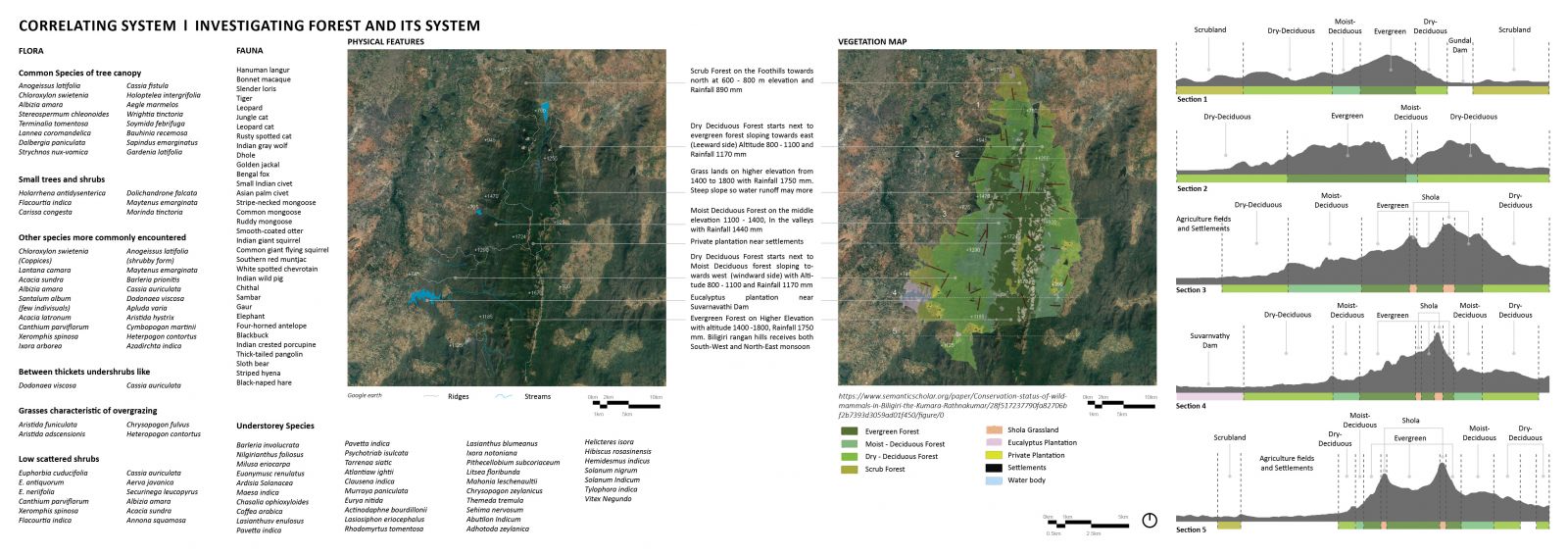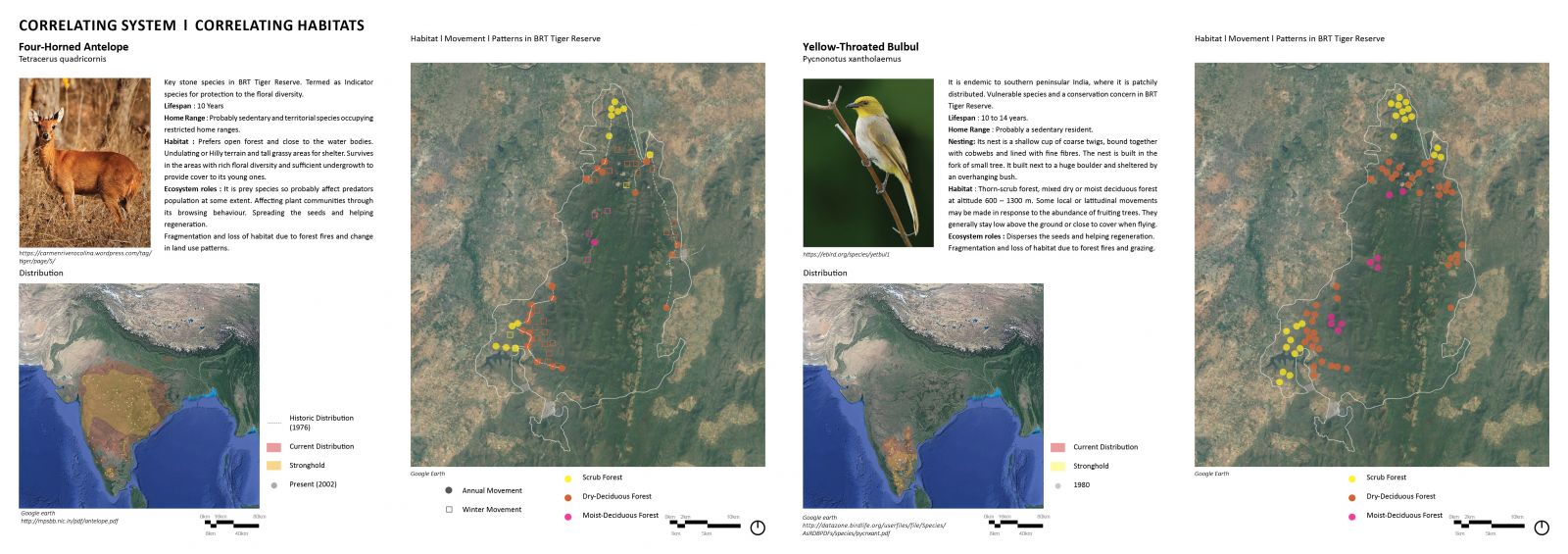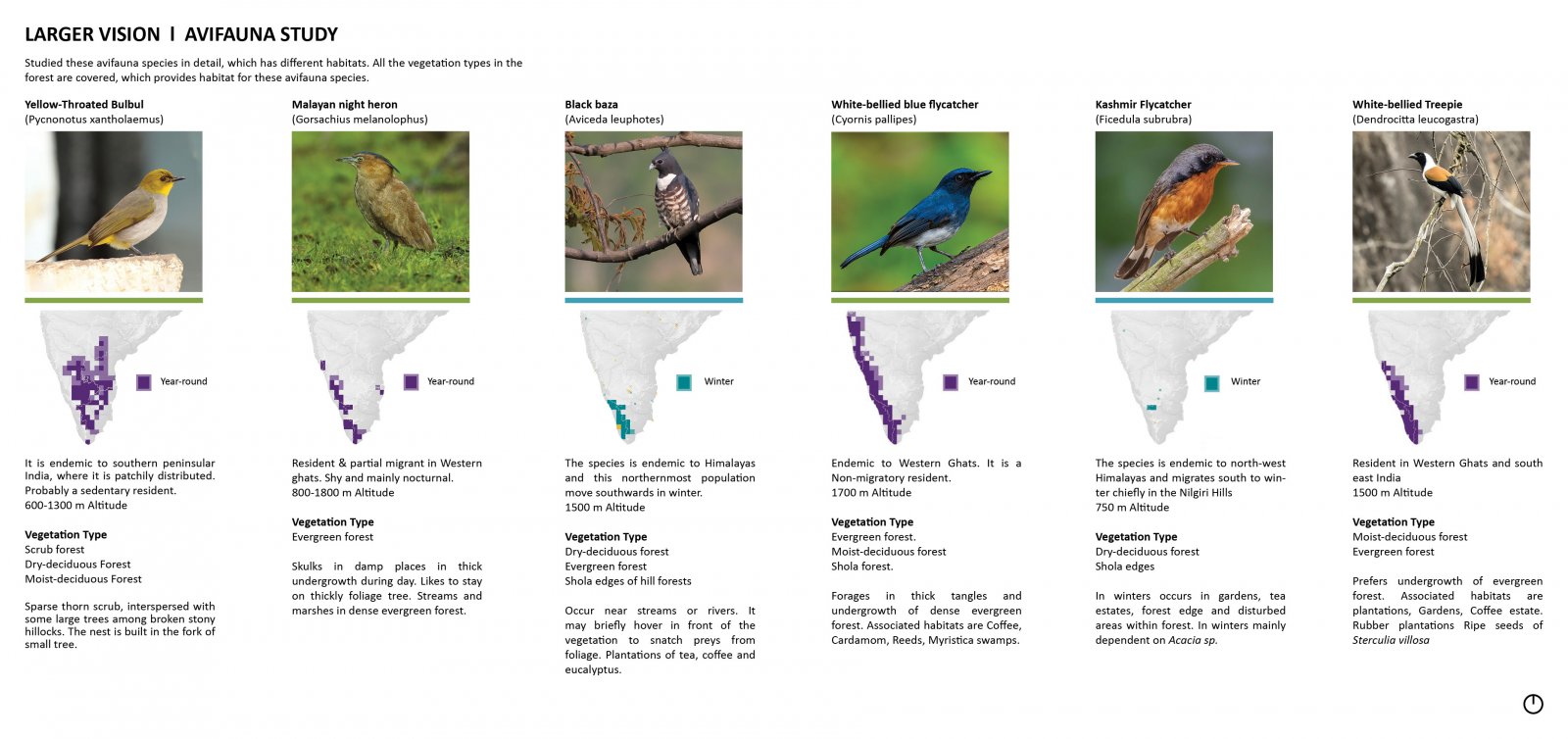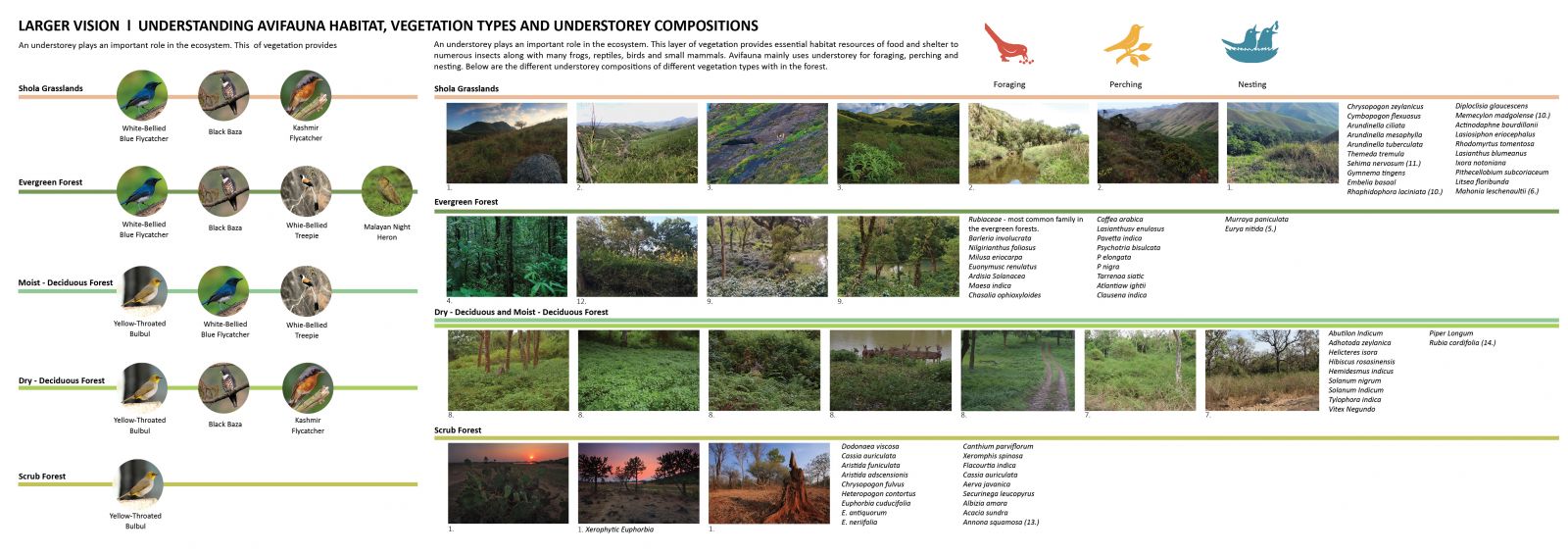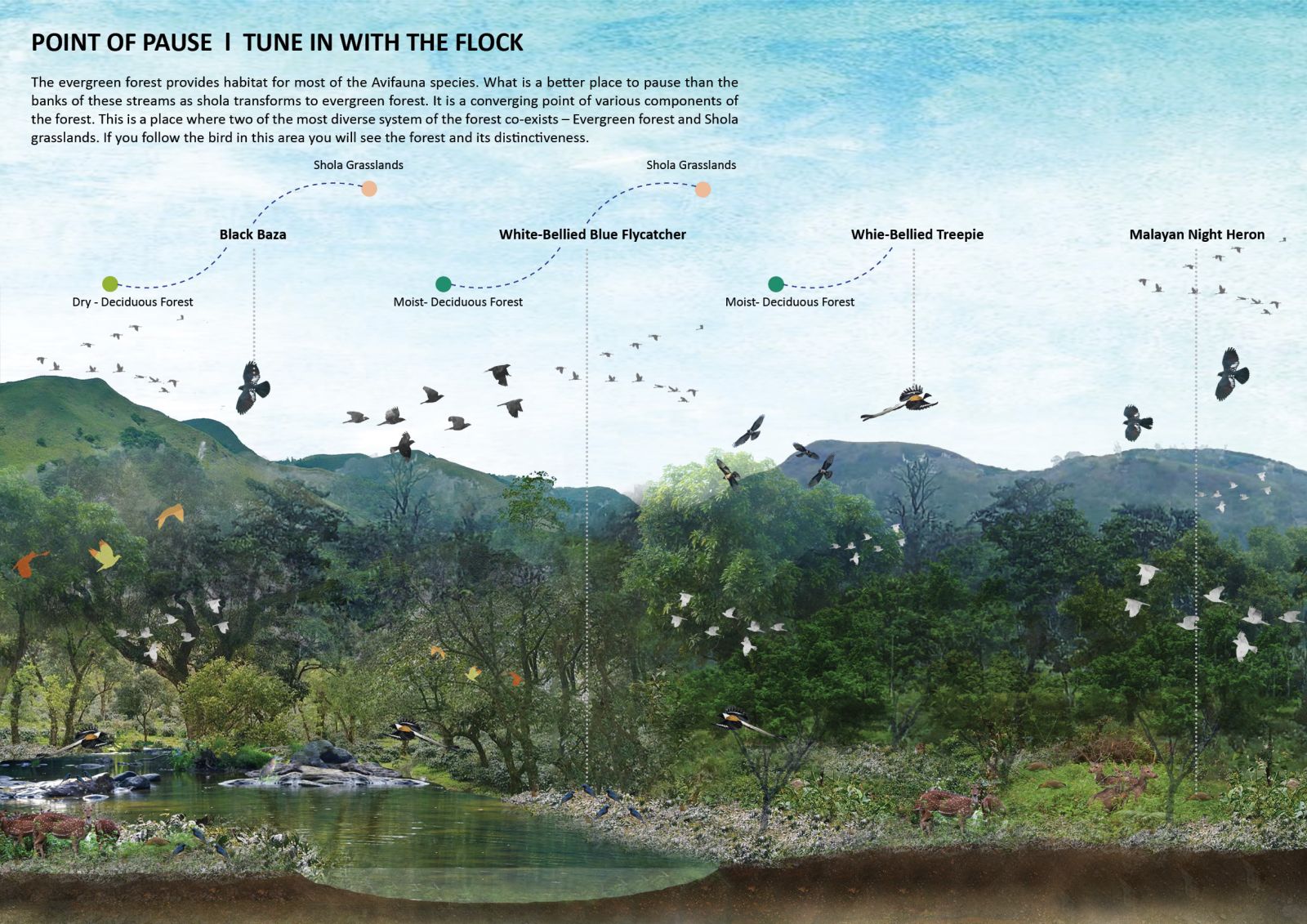Your browser is out-of-date!
For a richer surfing experience on our website, please update your browser. Update my browser now!
For a richer surfing experience on our website, please update your browser. Update my browser now!
Dry Evergreen Forest I Albizia amara-Chloroxylon-Anogeissus Latifolia series
(Biligiri Rangaswamy Temple Tiger Reserve)
Is it necessary to connect the forest physically? Are there intangible connections? This study started in search of ‘distinctiveness’ of the forest. This dry evergreen forest is a mosaic of dichotomous systems. It hosts a spectrum of sub types ranging from the sparse to dense, moist to dry and open to closed forest owing to its spread over the windward and leeward side of the ridges of western ghats. When one moves within the forest, we experience these two aspects simultaneously. One layer that varies in the understorey - from shola grasslands to scrub forest and the distinct bird calls that change along with this varied understorey. The evergreen forest provides habitat for most of the avifauna species. What is a better place to pause than the banks of these streams as shola transforms to evergreen forest. This is a place where two of the most diverse systems of the forest co-exists – evergreen forest and shola grasslands. If you follow the birds in this area you will see the forest and its distinctiveness.


